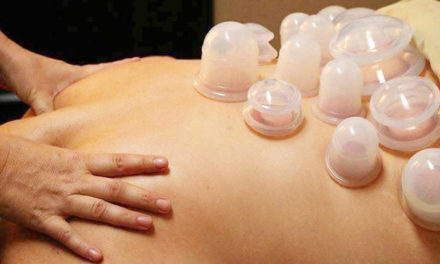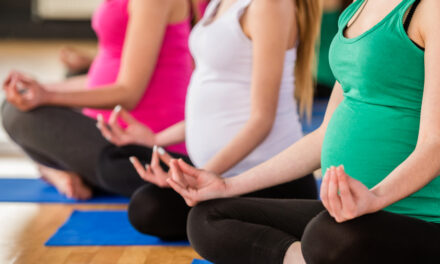1. HOW MUCH WEIGHT SHOULD I USE WHEN STRENGTH TRAINING?
If you’re new to resistance training, the answer is little to no weight. Your goal is to learn the proper movement for the exercises before adding any major resistance. People get confused with the purpose of strength work. It’s not about training one muscle at a time. There is not a single exercise that isolates one muscle. Your muscles are constantly working together to create movements. So once you have the movement down, you can start to add weight. My rule of thumb for adding weight is that (unless you are lifting to increase your maximum single-rep weight) there should be enough weight to make the last couple of reps a challenge. When it stops being a challenge, go up a little
2. HOW CAN I INCREASE LEAN MUSCLE MASS?
To increase lean muscle mass, lift heavier weights. And by heavier, I mean lifting with enough resistance that it’s a challenge. Generally speaking, sets in the rep range of 10-15 with enough resistance to make the last few reps a challenge is a simple way to increase muscle mass. The best part of increased muscle mass is that it’s a main driver of increased metabolism. More muscle mass means more calories burned at rest.
The lean part is what usually confuses people. This comes from concurrently doing some form of low aerobic exercise (walking on an incline, swimming, cycling, easy running) to increase your fat usage at lower heart rate levels. The vast majority of people (even athletes) are burning carbs all day because that’s all they ever give their body as fuel.
However, you can’t out-exercise crappy nutrition. Your body will burn fat when it feels like it doesn’t need it, AND it doesn’t have an easier fuel source to pull from, like sugar and carbs. If all you give it are macro (carb, fat, protein) heavy meals with no substance in vitamins and minerals, your body will still perceive that as starvation and will hold onto that fat for dear life. Everyone’s needs are different based on their activity levels, but our top recommendations for changing your diet are to cut out sugars when you don’t need them (for a training session) and eat more raw or lightly cooked veggies!
3. HOW OFTEN SHOULD I REST?
Typically daily, for 7-8 hours. But in the lens of training with a purpose, your body rewards consistency over one great day. Most of our clients take one day off a week and take an easier week monthly. If you’re new to training, the workouts will fatigue you more, and you’ll have to work through the soreness. But once you’re consistent, you need to listen to your body!
4. WHAT CAN I DO ABOUT MUSCLE SORENESS?
Soreness is a good thing! It’s your body’s way of telling you that you did something more than it’s used to doing. But that discomfort is the only way it adapts to the training you are putting it through. If walking is a challenge, take a day off. But don’t let low-grade soreness stop you from continuing to train. Sharp pain is another story. If you’re experiencing soreness, light massage, compression, and ice are effective techniques for relief. But, if you’re REALLY sore, LEAVE IT ALONE or go for a walk. Let the muscles heal up without you pounding them more with a massage gun, foam roller, or another one of the many recovery torture devices on the market.
5. WHEN SHOULD I STRETCH, AND HOW OFTEN?
With static stretching, meaning stretch and hold, you should always stretch AFTER a workout and NEVER stretch a cold muscle. It pains me to see people static stretching before a race. It’s a waste of time and can do more damage if it’s already on the edge of injury. If you want to increase the range of motion in a muscle group, you want those muscles to be warmed up, and you need to hold the stretch for at least 30 seconds. Ideally, you’d stretch after every workout. We try to get our athletes to stretch at least 2-3 times per week. Pro Tip: Stretch in a hot shower!
6. WHAT TRAINING SHOULD I BE DOING TO LOSE WEIGHT?
If weight loss is the main goal, you should be lifting heavier weights and doing low aerobic cardio. Couple that with changes in your daily nutrition, too. You have to do A LOT of training to see results without changing what you are putting into your body. And even then, there’s generally a quick plateau in your results.
7. HOW LONG DOES IT TAKE TO SEE RESULTS?
This is very individualized. You’ll see results quickly if you have a lot of weight to lose. I’ve seen folks lose double digits in a week (not recommended), but they had a lot to lose. The nice part is your body will adapt to aerobic exercise quickly, and your capacity to work harder or longer should improve fairly rapidly. Folks who stay consistent see some great results on the strength side of things in only 3-4 weeks. And that’s generally about how long it takes to lock in new habits and routines to keep it going.
8. WHAT’S THE BEST DIET?
There isn’t one. The best “daily nutrition” keeps you healthy and feeling good, and you can sustain it forever. A diet usually implies restricting, changing, eliminating, and all the things people generally can’t or won’t continue to do long term. For a generalized form of daily nutrition, we’ve seen the best results from some semblance of plant-based eating. For some, that means “mostly” plant-based, where they are cycling in a small amount of meat or dairy. For some, being totally plant-based is sustainable. For others, they may be plant-based but cycle in fish. The real focus is making veggies the most significant part of each meal versus a carb or a protein. The biggest part of your plate is full of the vitamins, minerals, and micronutrients you need that most people are deficient in. While plant-based isn’t doable for everyone, increasing veggie intake is always a winning proposition.
Dale Sanford is the co-founder of BPC Performance, Inc. and has been in the health and human performance industry since 2007. For more info, visit @bpcperformance, bpcperformance.com, or listen to the Coaches on Couches Podcast







